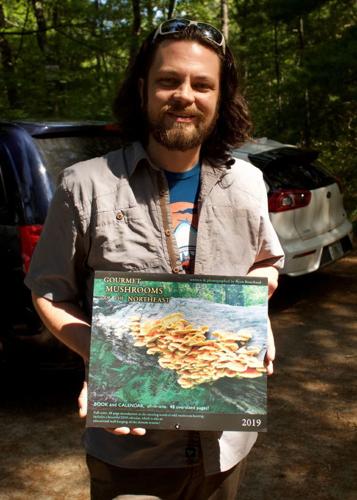Wakefield pair is trying to keep ancient skill alive through the creation of new foundation
- THE SUN – Westerly, RI
- Cynthia Drummond
- Jul 10, 2018
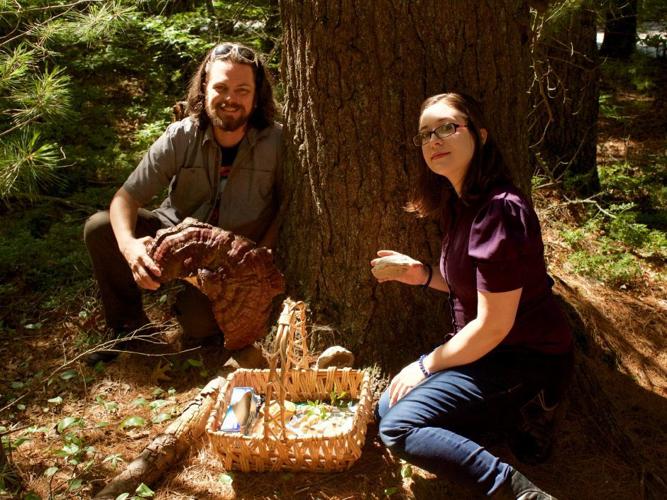
SOMEWHERE NEAR THE CHARLESTOWN-SOUTH KINGSTOWN BORDER — Ryan Bouchard and Emily Schmidt hit the wooded trail with their heads pointed down. They are focused on one thing: finding mushrooms.
As founding members of the Mushroom Hunting Foundation, Bouchard and Schmidt, of Wakefield, teach people how to safely and responsibly forage for wild mushrooms. It is an ancient skill that immigrants from Europe brought to the United States but one that has since been largely lost.
“One thing is, the mushrooms can be different in some parts of the world, and some poisonings have happened because of that,” Bouchard said. “Another thing is, the language of the detailed parts of mushrooms — it’s complicated enough in English, and for someone to know that in their native language and to know how to translate it into English, things were lost there. One top of that, in the 1900s, it was very un-hip. You didn’t go out in the woods to get food.”
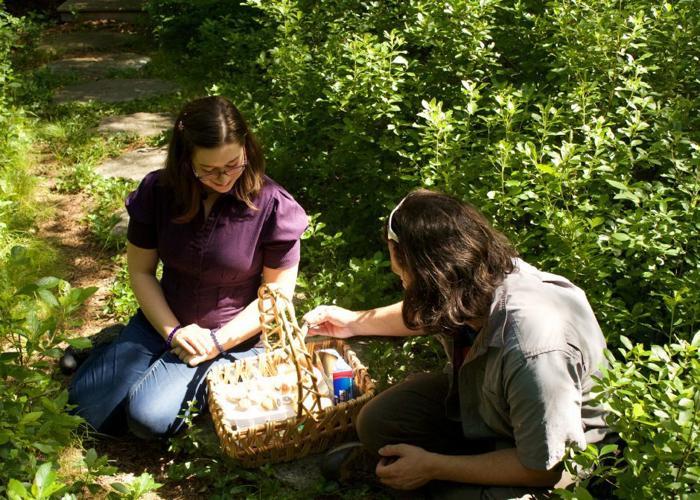
Bouchard has recently written a richly-illustrated book, Gourmet Mushrooms of the Northeast, which also includes a 2019 calendar, because, as with everything in nature, mushrooms have seasons.
“We want to get the word out that mushrooms have different seasons and mushrooms have not only a certain habitat that you find them in, but it’s going to be a certain time of year that you would look for them,” he said.
Usually in July, the summer mushrooms would be evident, but this year, conditions have not been ideal.
“It has been dry,” Schmidt said, walking along the path. “And the mushroom season has been kind of frustrating.
Despite the lack of rain and the hot sun, Bouchard and Schmidt begin finding mushrooms almost immediately. There’s a small black russula, several little mushrooms called “plums and custard” because of their burgundy and cream coloring, a couple of boletes, one edible and the other bitter, and a nasty-looking puffball with a black interior called a “poison pigskin,” which, not surprisingly, is not edible.
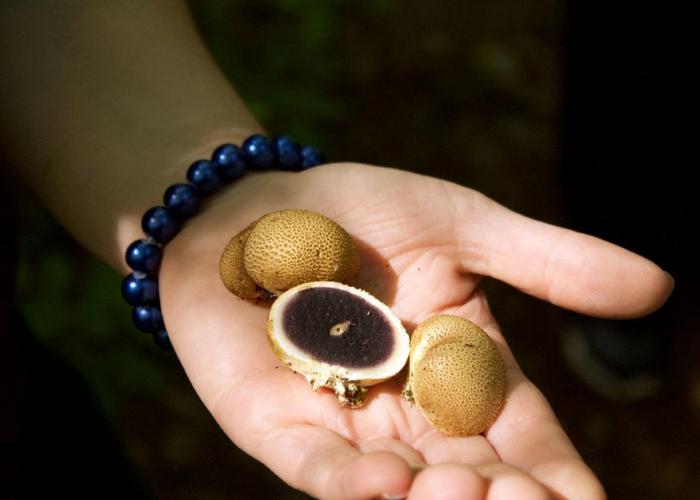
Basic mushroom-hunting equipment includes a collecting basket, brushes to clear away debris from mushrooms and also to clean them when they’re picked, a magnifying glass to help identify different species and knives to cut into mushrooms like the poison pigskin, which is identified by its black interior.
“Every mushroom hunter should know, especially if you’re going to eat puffball mushrooms, you have to check inside and make sure it’s not the poison-pigskin puffball,” Bouchard said.
Bouchard became interested in mycology, the study of fungi, after studying the work of University of Rhode Island botanists like the late Roger D. Goos. Nine years later, he and Schmidt are leading mushroom-foraging workshops and restaurant events and giving talks throughout southern New England.
One of the most widespread mushroom myths, Schmidt said, is that all mushrooms taste more or less the same.
“A lot of people think that, because the mushrooms sold in the supermarket are all the same species,” she said. “The white buttons, the criminis, the portobellos are all the same mushroom. In the wild, the flavors are so diverse. They can be sweet and almost sugary, they can be sour or bitter or just savory and meaty.”
The overriding caveat of mushroom-hunting is never to eat something you can’t positively identify. The motto for safe mushroom-hunting is “when in doubt, throw it out,” and a field guide is another essential foraging tool.
“We recommend getting our book or at least a book,” Bouchard said.
“You don’t just go out and pick mushrooms and cook them up,” Schmidt added. “You have to take them home every time and study them with your book — more often, more than one book so you can cross-reference and make sure you get accurate information.”
“Never take a chance,” Bouchard said. “You don’t eat a mushroom unless you’re 100 percent sure.”
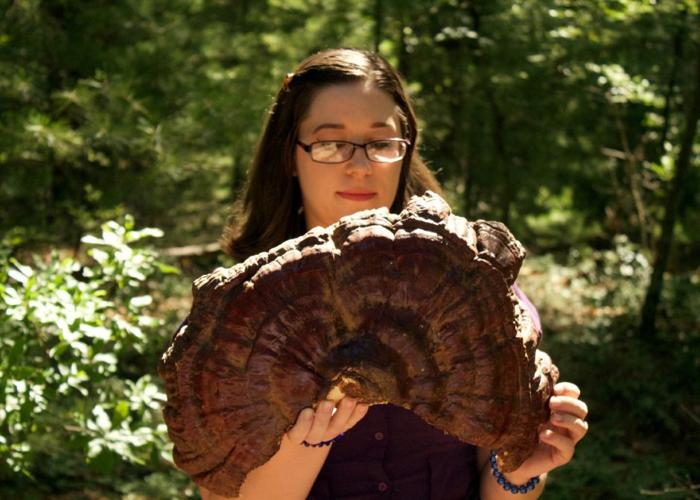
Of the hundreds of mushrooms in New England, Schmidt said her most exciting find so far has been a lobster mushroom, which is actually a russula mushroom with an edible mold growing on it. It gets its name not from its taste but from the red-orange mold that looks like a cooked lobster.
“Ryan calls it ‘the blue cheese of mushrooms,’ and I’ve been waiting for years to find that. I think it was last year or the year before that, in New Hampshire,” she said.
“It’s a bright orange mold that covers them,” Bouchard said, “so in a sense it is like blue cheese. This is a good mold that turns it into the delicious lobster mushroom.”
When you spend so much time foraging in the woods, you have to contend with several occupational hazards.
“Bees. I almost stepped in a bee nest one time,” Schmidt said. “Just falling and hurting yourself when you’re out in the woods. I worry about that.”
The biggest concern, however, is tick bites.
“I had Lyme [disease],” Bouchard said. “For some reason, they get me and not Emily.”
More information on mushroom-hunting classes, and Bouchard’s book, can be found at https://mushroomhunting.org/
@cynthiadrummon4

